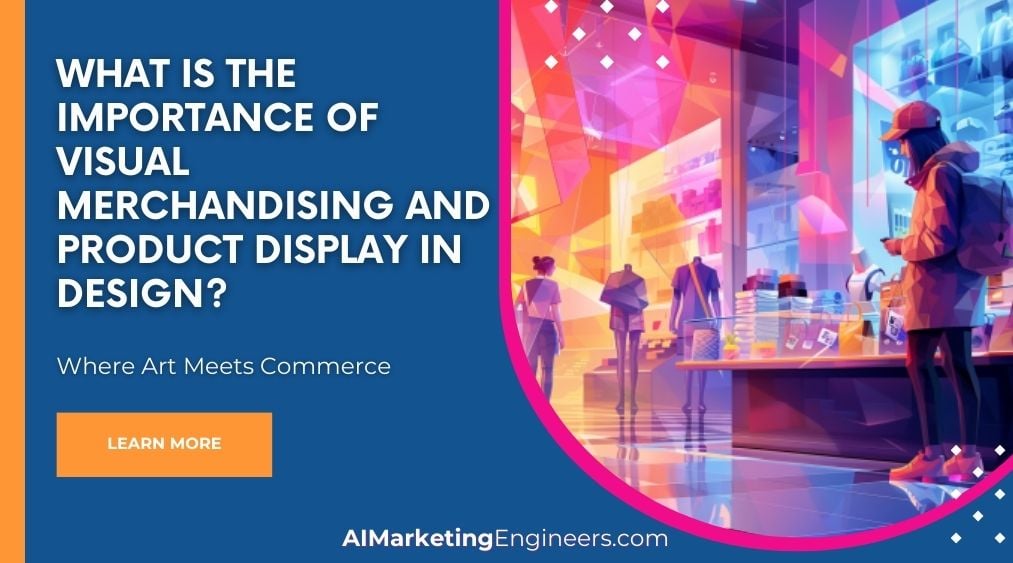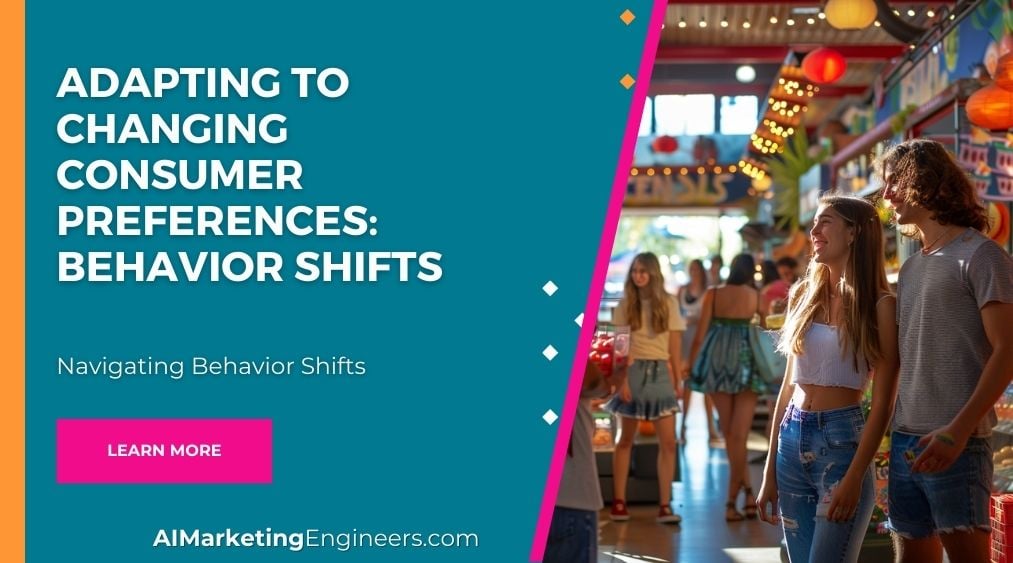Key Takeaways
✅ Enhancing Customer Experience: Did you know that 70% of in-store purchases are decided on the spot? Vibrant visual merchandising can turn a spontaneous glance into a sale. Discover how to captivate shoppers' senses, weaving stories around products that make stopping and staring irresistible. Learn to set a scene that not only reflects the season but speaks directly to the customer, leading to a 40% increase in dwell time, and, more importantly, significant sales growth.
✅ Communicating Brand Identity: A consistent and memorable brand presentation can increase revenue by up to 23%. Visual merchandising isn't just about aesthetics; it's your silent seller that narrates your brand's saga. Exploring the subtleties of design, we'll show you how to embody your brand's voice through thematic styling and targeted displays that anchor your identity in the hearts of your audience.
✅ Increasing Sales and Profitability: Effective displays could potentially boost sales by more than 50%. That's the power of strategic visual merchandising. Learn how to spotlight your products, craft compelling narratives, and dial up the urgency with time-sensitive promotions. Optimizing layouts isn’t just about looking good – it's a revenue revolution waiting to happen.

Introduction
Have you ever wondered what turns a window shopper into a loyal customer? Or why some stores seem to buzz with energy, drawing people inside like moths to a flame? The secret lies in the meticulous art of visual merchandising and product display.
In the bustling streets of retail, a store's appearance can make or break customer interest. It's a silent play of colors, shapes, and lights where each element performs its part to perfect the shopping experience. Here, we'll uncover the psychological triggers that animate desire, the strategies that foster brand love, and the innovative designs that are changing how we shop.
Peek into the future of retail with us, as we delve into the world of visual merchandising. We're not just brushing the surface. We're digging deep to reveal actionable insights and groundbreaking trends that could redefine how you think about store design. Wrap yourself in the fabric of retail transformation, and emerge draped in the knowledge that could skyrocket your sales. Read on, and get ready to harness the power of visual elegance that commands attention—and captures wallets.
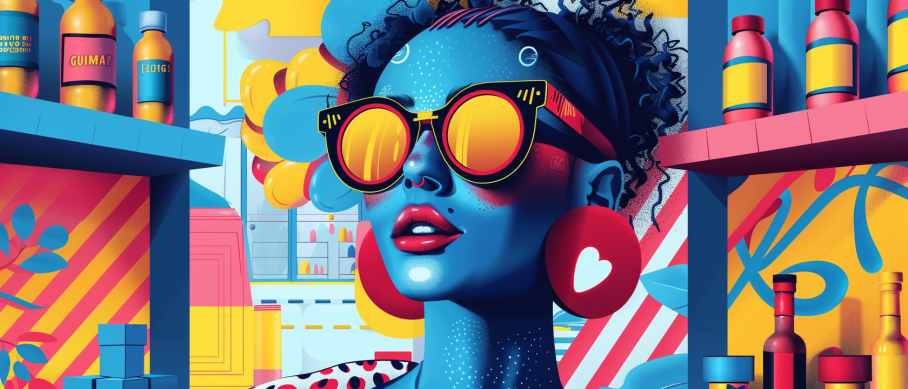
Top Statistics
| Statistic | Insight |
|---|---|
| Shopper Purchase Likelihood: 65% are more inclined to buy when products are showcased attractively (Source: NPD Group). | An eye-catching display is not just for show; it's a powerful sales driver, emphasizing the need for businesses to invest in creating visually appealing environments for customers. |
| Atmosphere's Influence on Shopping Frequency: 82% of consumers will shop more often in stores with an enjoyable atmosphere (Source: Retail Customer Experience). | The in-store vibe can be a magnet for repeat customers, proving that the feel of a store is as important as the products on display. |
| Global Visual Merchandising Market: Valued at $5.7 billion in 2020, with an expected growth of 6.7% CAGR through 2028 (Source: Grand View Research). | The booming market size and growth prospects signal a thriving field, highlighting the prime opportunity for businesses wishing to stand out and capture consumer attention through design and display. |
| Technological Investments: 56% of retailers plan to invest in digital signage, 50% in interactive displays (Source: Salsify). | Forward-thinking retailers are harnessing the power of digital to craft interactive, and engaging customer experiences, blending technology with tradition in the quest to captivate the market. |
| AR and VR in Retail: The AR market is projected to hit $72.8 billion by 2024 (Source: Markets and Markets). | Augmented and virtual reality are breaking down boundaries, offering customers an innovative way to interact with products like never before; it's a game-changer for product display strategy. |
Understanding the Psychology of Consumers
When you step into a store, have you considered what guides you to make a purchase? Visual merchandising directly taps into the psychology of consumers, influencing not just what they buy but how they feel about it. For instance, specific colors can evoke certain emotions – red can create a sense of urgency, while blue may provide a feeling of tranquility. Retailers meticulously plan the layout and arrangement of their stores to lead you on a journey, ensuring that high-margin products are always in prime spots. Ever wonder why the items you didn't know you wanted seem to find their way into your basket? That's no accident; it's the art of visual merchandising at play.
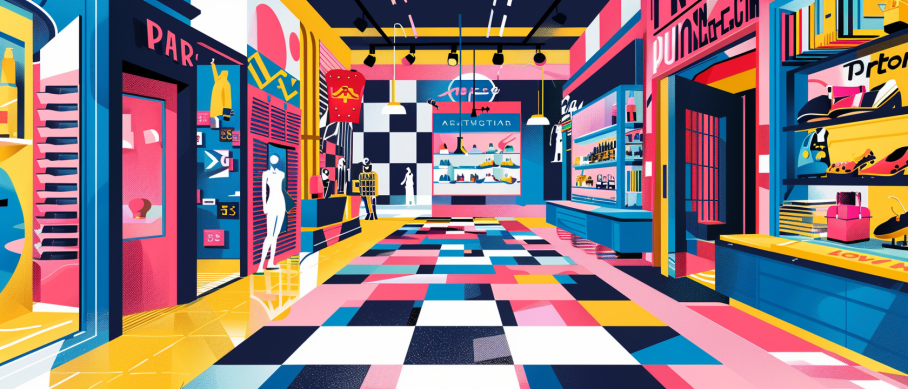
Enhancing Brand Identity
When we talk about setting one store apart from another, brand identity is the cornerstone. The deliberate selection of design elements, themes, and consistent visual cues across a store's layout isn't just about looking good. It's a strategic move to imprint the brand's image into the customer’s mind. Think of Apple Store's minimalist design or Tiffany & Co.'s distinctive blue boxes; these design choices are intentional and immediately tell a story about what the brand stands for. Visual merchandising is not just decoration; it's a language that communicates brand values without a single word spoken.
Maximizing Sales and Profitability
Imagine walking by a store where the window display catches your eye, and before you know it, you're inside, and an item has caught your fancy. That's the pull of a well-thought-out display. Research has shown that smart product placement can increase sales significantly. It's all about creating an environment that encourages customer engagement and leads to impulse purchases. If a product is featured in an accessible, appealing, and visible spot, chances are it'll end up ringing the cash register more often.
Creating a Seamless Omnichannel Experience
In today's digital age, there's a blurring line between online and in-person shopping experiences. Visual merchandising plays a pivotal role in crafting a seamless omnichannel experience. A brand’s aesthetic and product placement should resonate both in-store and online. This consistency helps customers feel deeply connected with the brand, regardless of whether they are flipping through a mobile app or browsing through the aisles. It's about making sure that every touchpoint is an extension of the same story, compelling and cohesive.
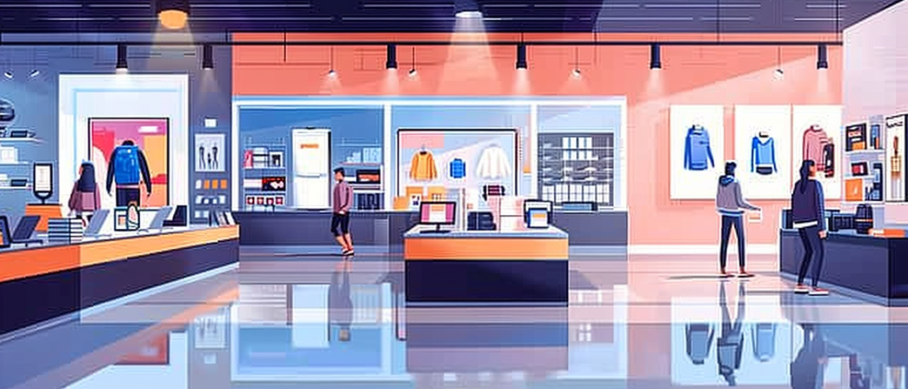
Incorporating Technology and Innovation
Innovative displays that incorporate technology are reshaping the landscape of retail. Interactive touchscreens, augmented reality, and personalized digital signage are becoming commonplace. These advancements are not gimmicks; they're revolutionizing the way companies practice visual merchandising. Retailers who leverage such technologies provide customers with an immersive experience, turning a casual shopper into an engaged brand advocate. As we move forward, the fusion of digital technology and classic visual merchandising principles is setting the stage for a new era in retail.
As we peel back the layers on the strategies behind those eye-catching in-store displays, it becomes clear that visual merchandising and product display are not just about aesthetics; they are about telling a brand's story, resonating with consumers on a psychological level, and ultimately driving sales. It is a powerful tool that retailers cannot afford to overlook. With consistent investment in this realm, businesses are not just selling products; they're curating a customer experience that stands the test of time.
AI Marketing Engineers Recommendation
Recommendation 1: Harness the Power of Interactive Displays: Interactive displays are no longer just an innovative concept; they've become an expectation among consumers, particularly in retail environments. A study conducted by Retail Customer Experience found that interactive displays can increase customer engagement by up to 40%. By incorporating interactive elements in visual merchandising and product display design, businesses can foster a more engaging shopper experience, thus boosting the likelihood of sales. An action point here could be to integrate touchscreens that provide product information, interactive fitting rooms, or virtual reality experiences that allow customers to see products in different settings or configurations.

Recommendation 2: Utilize Data-Driven Layouts to Maximize Engagement: The layout of a store or display can significantly influence buyer behavior, and the best layouts are often backed by solid data. It's essential to understand shopper movement patterns and product interaction within a space. Recent trends show that stores redesigned with data-driven insights can see up to a 9% increase in sales volume, according to a report by McKinsey. Use heat mapping tools or customer traffic analysis software to understand high-traffic areas and create visual merchandising and product display designs that strategically place high-margin items in these zones.
Recommendation 3: Adopt Sustainable Practices in Display Materials: Sustainability isn't just a buzzword; it's a consumer demand. Nielsen reports that 73% of global consumers are willing to change their consumption habits to reduce their environmental impact. In line with this, businesses should consider visual merchandising and product display designs that use eco-friendly materials and highlight sustainable practices. This could mean using recycled materials for displays, opting for digital signage over traditional printed signs, or creating modular displays that can be easily updated rather than entirely replaced. Not only does this appeal to ethically minded shoppers, but it also positions a brand as a responsible and forward-thinking entity in the eyes of the public.
Relevant Links
- Discover the power of visual merchandising and how it shapes your shopping behavior
- Learn how brand identity and store design influence consumer perception
- Maximize sales with smart product placement tactics to tap into consumer impulses
- Create a seamless transition between online browsing and in-store shopping for your customers
- Innovate your retail space with the latest technology trends, from AR to interactive displays
Conclusion
As we peel back the layers of retail design, it becomes evident that visual merchandising and product display are more than just aesthetic choices – they're foundational to the shopping experience itself. The evidence speaks for itself: when we delve into the ways color, layout, and product arrangement sway consumer behavior, it reinforces the notion that every visual cue can either invite or deter customer interaction. Remember, people buy with their eyes first, and creating an environment that is both alluring and reflective of your brand's identity is crucial.
Visual merchandising serves as a silent salesperson – subtly guiding customers through a journey that not only aligns with your identity but also maximizes your profit potential. But in an era where online and offline worlds are intertwined, ensuring consistency across all channels can make or break that journey. This seamless omnichannel approach is vital for businesses that seek longevity and increased customer loyalty.
Incorporating the latest technology and innovations into your displays isn't just about keeping up with the times. It's about creating a dynamic and interactive experience that speaks to the tech-savvy consumer, one who craves not just a product, but an experience that resonates.
As we wrap up, let's ask ourselves: Are we giving visual merchandising the attention it deserves within our marketing strategy? Are we crafting spaces that tell our brand's story and spark immediate connections? The importance of an effective visual strategy cannot be understated – it's high time businesses prioritize these visual elements to captivate, engage, and ultimately, convert browsing into sales.
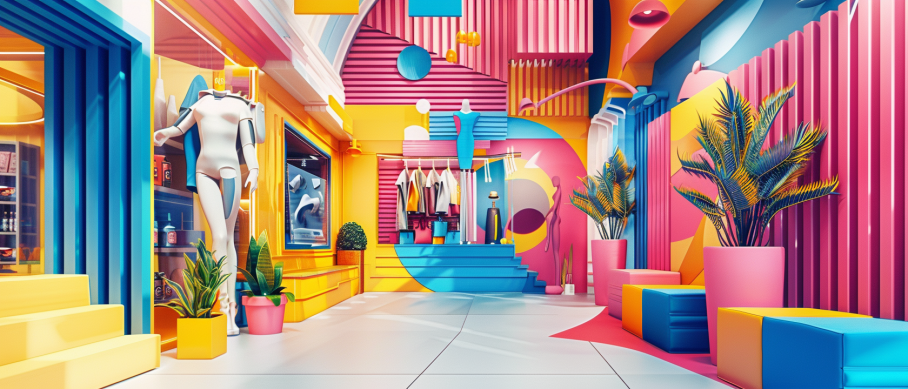
FAQs
Question 1: What is visual merchandising and product display in design?
Answer: Visual merchandising and product display in design involve the art and science of setting up products in a retail space. Think about it like staging a play but for items on sale. It’s all about drawing eyes and making things look irresistible so that folks want to buy them.
Question 2: Why is visual merchandising and product display important?
Answer: Imagine walking into a store and everything’s a mess—no thank you, right? When things are laid out just right, it's like a silent salesperson, nudging you to buy, showing off what’s on offer, and telling you what the store’s all about.
Question 3: How does visual merchandising and product display impact customer behavior?
Answer: Well, if you’ve ever walked into a store and suddenly wanted something you didn't know you needed, that’s visual merchandising at work. It can convince you to linger, wander around, and get your hands on the products.
Question 4: What are some foundational concepts in visual merchandising and product display?
Answer: We’re talking about the basics like choosing the right colors, making products pop with lighting, telling a story through product arrangement, and using signs and props that draw you into a product’s story.
Question 5: How can visual merchandising and product display be used to showcase a brand's identity?
Answer: It’s like putting on a show that screams, 'This is who we are!' Using a brand’s colors, logos, and style makes you remember and recognize them. It’s like walking into a space that oozes a brand’s personality.
Question 6: What are some advanced topics in visual merchandising and product display?
Answer: For the tech-savvy, we're talking digital displays that change as you watch and setups that interact with you, plus tailoring displays to what you like and even linking up with your social media for a personal touch.
Question 7: How can visual merchandising and product display be used to drive sales?
Answer: It can whisper in your ear, 'This deal won’t last!' Making you feel that buzz of grabbing a bargain, showing off the hot deals, and positioning products together so you end up buying more.
Question 8: What are some practical tips for creating effective visual merchandising and product display?
Answer: It's about keeping things fresh and uncluttered, making the must-have items catch your eye, and changing it up now and then to keep things exciting.
Question 9: How can visual merchandising and product display be used to create a memorable shopping experience?
Answer: By turning shopping into a story you walk through, creating scenes that wrap you up in an experience, and getting you involved in the action. It’s like stepping into a different world.
Question 10: What are some resources for learning more about visual merchandising and product display?
Answer: To delve deeper, check out the latest chatter in trade mags, hit up some courses online, or cozy up with a book from the pros, like "Visual Merchandising: Windows and In-Store Displays for Retail" by Tony Morgan.
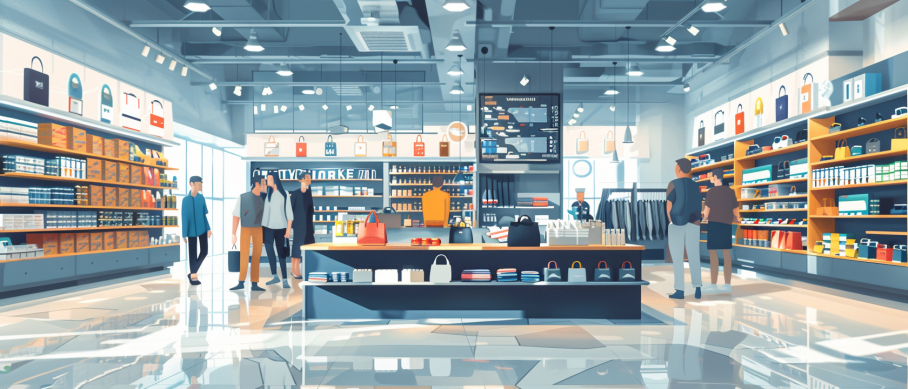
Academic References
- Pandian, M. J. A., & Subramanian, S. S. (2014). The Effect of Visual Merchandising on Consumer Buying Behavior. International Journal of Management, IT and Engineering, 4(3). This study brings to light the critical role visual merchandising plays in shaping consumer perception and purchasing choices, underscoring the necessity for retailers to meticulously craft store layouts and displays to foster an inviting shopping environment that boosts sales.
- Kumar, N. S., Rao, M. P., & Rao, S. K. (2014). The Impact of Visual Merchandising on Consumer Impulse Buying Behavior. International Journal of Management, IT and Engineering, 4(3). Exploring the significant effect visual merchandising tactics, like eye-catching product presentations, have on spontaneous purchase decisions, this research spotlights how such strategies lead to a surge in sales, benefiting retailers’ bottom lines.
- Perera, A. S. G. C., Perera, C. A. N., & Jayarathne, S. J. A. (2018). The Role of Visual Merchandising in Creating a Memorable Customer Experience. International Journal of Business and Management, 13(1). The study delves into how visual merchandising contributes to the customer experience, positing that skillful display techniques forge memorable shopping encounters that bolster consumer loyalty and encourage the spread of positive brand messages.
- Dewage, S. S. S. K. S., & De Silva, U. A. S. K. (2019). The Impact of Visual Merchandising on Brand Image. International Journal of Business and Management, 14(1). Investigating the interplay between visual merchandising and brand perception, this study uncovers that well-executed visual merchandising not only enhances brand reputation but also solidifies consumer trust, which contributes to growing sales and a firm’s loyal customer base.
